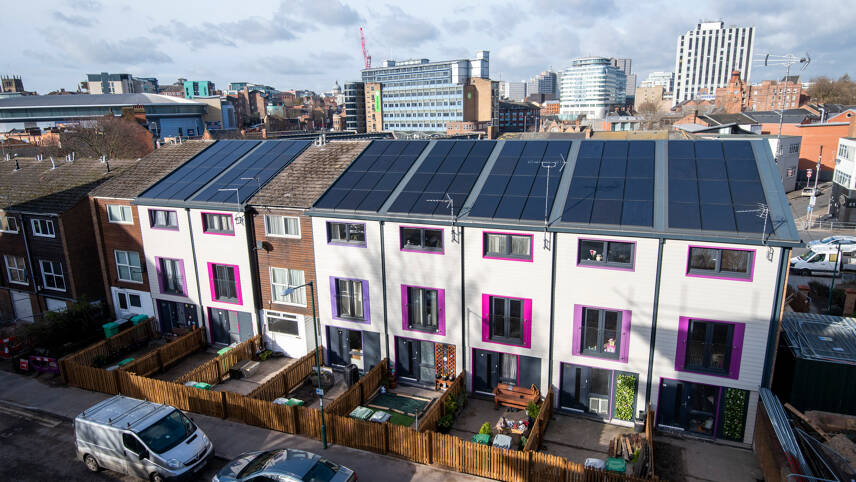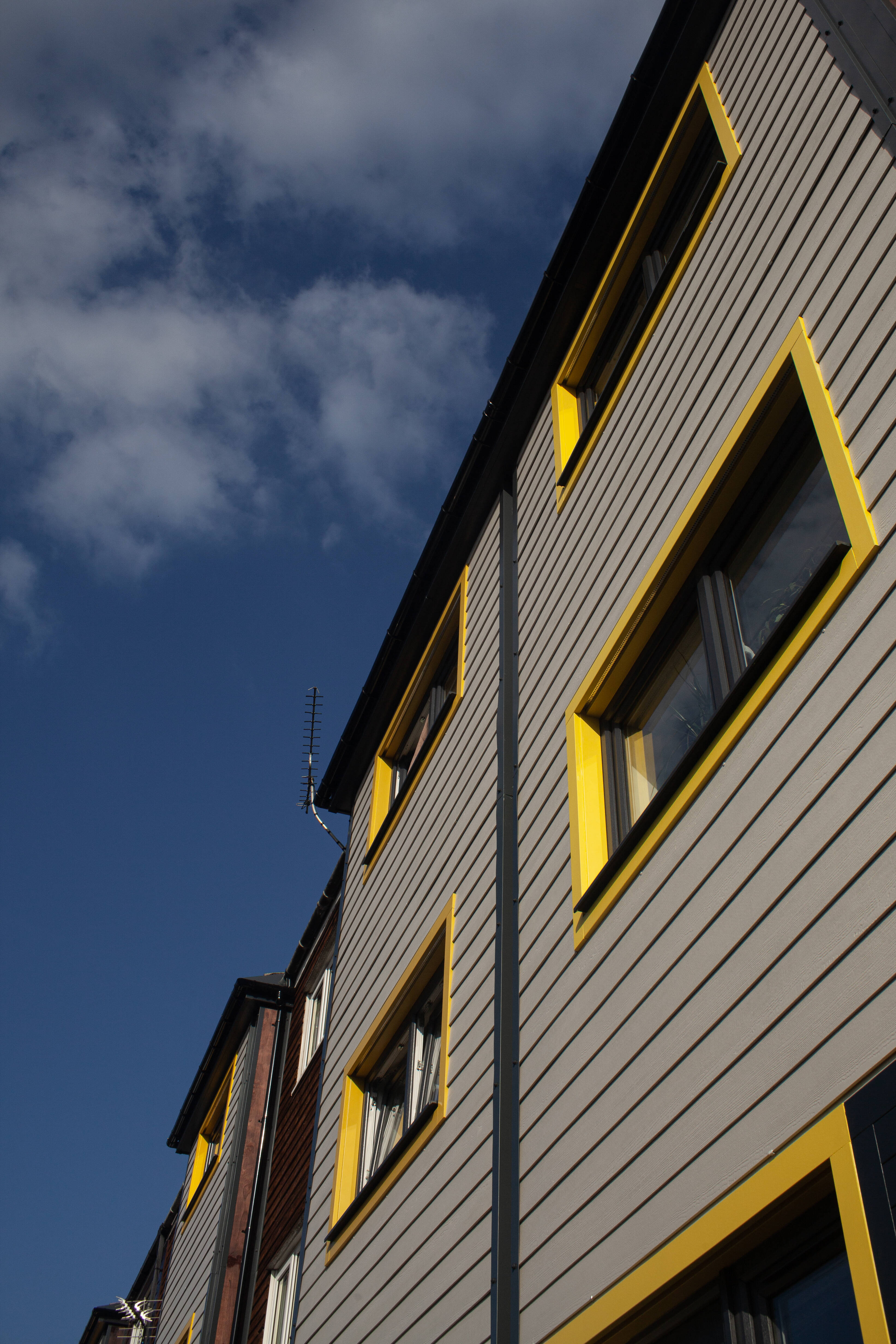You’ve reached your limit!
To continue enjoying Utility Week Innovate, brought to you in association with Utility Week Live or gain unlimited Utility Week site access choose the option that applies to you below:
Register to access Utility Week Innovate
- Get the latest insight on frontline business challenges
- Receive specialist sector newsletters to keep you informed
- Access our Utility Week Innovate content for free
- Join us in bringing collaborative innovation to life at Utility Week Live

With calls for energy efficiency reaching fever pitch, Ian Hutchcroft examines why the UK needs to rethink retrofit, what lessons can be taken from Dutch standard and funding approach 'Energiesprong', and how the utilities sector can play a central role in making it work.
 As the stark reality of the energy crisis unfolded this summer, it was hard to truly comprehend the devastation this winter will bring as multiple 35°c+ heatwaves blazed across our country. We do, however, know it will be beyond anything we’ve seen in recent years.
As the stark reality of the energy crisis unfolded this summer, it was hard to truly comprehend the devastation this winter will bring as multiple 35°c+ heatwaves blazed across our country. We do, however, know it will be beyond anything we’ve seen in recent years.
Government intervention will bring some welcome short-term relief. Yet, as many experts have pointed out, immediately investing in a national retrofit programme offers a sensible, long-term solution.
But at Energiesprong UK, we know that it’s also essential we take a different approach to how things have traditionally been done – a departure which offers new opportunities for the utilities sector.
We must rethink retrofit
The way we currently deliver retrofit – onsite, incrementally and using traditional building methods – won’t deliver the results we need at the scale, speed or cost required for the climate crisis or the millions about to be plunged into fuel poverty.
What’s the alternative? Over the last seven years, we have been pioneering a revolutionary deep retrofit model called Energiesprong in the UK. It’s a successful Dutch-developed standard and funding approach for whole house refurbishment and new build.

It is designed to unlock zero carbon retrofit at scale, paid for by energy and maintenance savings and delivered by a new high-tech British industry – resulting in performance, comfort and costs long term and warm, affordable, desirable homes for life.
Homes are fully insulated using offsite manufactured wall and roof panels in conjunction with pre-assembled ‘energy pods’ – systems which manage a home’s retrofitted renewable technologies, energy storage and smart controls. When coupled with appropriate tariffs, this allows access to grid energy when it’s at its cheapest, to provide low-carbon, high efficiency heating, hot water and renewable energy production.
The Energiesprong approach offers performance for 30 years – unlocking finance through energy and maintenance savings, which pay for the capital work. And moving to an industrialised approach means less disruption in our neighbourhoods, higher-performing retrofit and the ability to ramp up quickly and cost-effectively.

- Resilience, reliability and collaborative transformation to adopt technology and innovation are among the key themes at the Utility Week Forum, which will take place in London on 8-9 November. Find out more here.
How can we scale in the UK?
 We’ve used social housing as the launching market, where the business case currently makes most sense. Some 173 properties across nine schemes in the UK are completed or under construction, with our recent performance report finding that on average properties are consuming more than 70% less energy versus other local homes.
We’ve used social housing as the launching market, where the business case currently makes most sense. Some 173 properties across nine schemes in the UK are completed or under construction, with our recent performance report finding that on average properties are consuming more than 70% less energy versus other local homes.
Through the Mayor of London’s Retrofit Accelerator Homes Innovation Partnership, which we are delivering in tandem with Turner & Townsend, there are approximately a further 1,500 Energiesprong homes in the pipeline. But there’s still a long way to go in terms of market and supply chain maturity – and we need to see commitment from the government and the wider industry to make deep retrofit truly work.
One of Energiesprong UK’s main asks for government is a £250m innovation investment over five years to unlock retrofit as a key part of the net zero industrial revolution to enable the development of factories, products and processes to decrease unit cost and increase speed of deployment for deep retrofit. This would kickstart and create a self-sustaining retrofit market to deliver our 2050 goals without expensive subsidies.
This could be affordably diverted from the more than £2bn subsidises that are pumped into domestic retrofit each year, propping up the traditional craft-based industry that delivers low performance measures.
Why is deep retrofit better for the utilities sector?
Traditional energy efficiency schemes have limited network impacts, with individual homes saving a few % here or there which are lost against the impact of electric vehicles and heat pumps arriving on most UK streets. Electrifying heat in lots of semi-efficient homes produces some quite scary numbers in terms of winter and peak demands and consumer bills.
 But hyper-efficient homes like those built or retrofitted to the Energiesprong standard redress the balance. Thermal performance of sub-50 kWh/m2/yr (potentially as low as 30 kWh/m2/yr) combined with relatively small heat pumps can bring electricity consumption within the typical consumption of a gas-heated home, even when the gas is gone.
But hyper-efficient homes like those built or retrofitted to the Energiesprong standard redress the balance. Thermal performance of sub-50 kWh/m2/yr (potentially as low as 30 kWh/m2/yr) combined with relatively small heat pumps can bring electricity consumption within the typical consumption of a gas-heated home, even when the gas is gone.
At a neighbourhood scale, where industrialised retrofits start to make sense economically, network reinforcement can be offset by energy efficiency schemes. Homes are much less ‘leaky’ – losing 1°C can take hours and provides inherent flexibility as heat pumps can run earlier or later without affecting comfort.
Heat pumps and batteries can be deployed at much lower cost as part of a modular ‘energy pod’ solution, and these can be tuned to reduce resident costs or offer static or dynamic network services to balance their host’s or local/national network demand.
Unlocking a functioning, self-financing deep retrofit market
In our social housing launching market, the Energiesprong model means landlords can take a longer term view of stock investment and wrap up investment, maintenance and rent into a capital investment that can drop energy costs by over 50%.
This means a new ‘comfort plan’ proposition for residents is possible, offering guaranteed energy services for a set cost by sharing the energy savings – providing an income stream for landlords.
We are currently working with innovative companies and energy suppliers who can use the energy solutions installed in homes to optimise the interaction with the grid. Using the systems to buy and export energy at different times can save hundreds of pounds per year on the energy costs required to run a house, in some cases reducing energy costs to zero, meaning the resident energy payments can be diverted to fund the cost of net zero homes.
New offers to customers in areas where networks are constrained may also be very valuable and network cost savings could help more ambitious energy efficiency schemes get off the ground. Even if network investments are only postponed, better decisions may be made once the future requirements are known and deploying swathes of hyper-efficient homes paid for with energy, maintenance and grid savings is surely ‘no regrets’ from an energy and climate change angle?
It’s clear there’s a huge opportunity for the utilities sector to innovate new solutions and offers that will create a better balanced, more efficient grid which, in turn, enables large swathes of social housing to be retrofitted to a net-zero standard.
(Title photo credit: Tracey Whitefoot)
 Utility Week Innovate, in collaboration with Utility Week Live aims to discover and promote innovative approaches to tackle front line business challenges through case studies, technical/project studies, networking, and live content. Be recognised as a key solution provider and meet your target audience face-to-face at UWL23. Find out more about exhibiting
Utility Week Innovate, in collaboration with Utility Week Live aims to discover and promote innovative approaches to tackle front line business challenges through case studies, technical/project studies, networking, and live content. Be recognised as a key solution provider and meet your target audience face-to-face at UWL23. Find out more about exhibiting
Please login or Register to leave a comment.